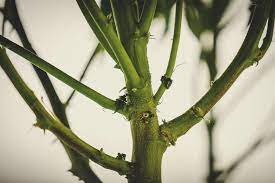Definition:
A branch is a stem extending from the main stalk of the plant that supports leaves, buds, and secondary branches as the plant grows.

Purpose and Usage:
Branches are vital for cannabis plant structure, as they support the development of buds and increase the plant’s surface area for light absorption. Healthy branching contributes to higher yields by providing more sites for bud growth and enabling even light distribution.
How It Relates to Cannabis:
- Bud Development: Branches are where cannabis buds grow, making them essential for flower production.
- Training and Pruning: Techniques like topping, low-stress training (LST), and pruning manipulate branches to optimize plant shape, maximize light exposure, and encourage larger yields.
- Nutrient Transport: Branches distribute nutrients and water from the roots to the buds and leaves, supporting overall plant health.
Common Misconceptions:
- More Branches Always Equal Higher Yields: While more branches provide additional bud sites, overcrowding can limit light and airflow, potentially reducing yield quality. Pruning is often necessary for optimal growth.
- Branches Don’t Need Training: Some believe branches grow best left alone, but training techniques can improve branch strength, light access, and overall yield.
Alternatives:
- Stalk: The main vertical structure of the plant from which branches grow; unlike branches, it primarily serves as the central support.
- Node: A growth point where branches or leaves emerge from the stalk, indicating where new branches can potentially form.
Importance of Branch:
Branches are critical for healthy cannabis plant growth, as they provide the structure and surface area necessary for bud development and efficient nutrient distribution. Cultivators focus on branch health and management to maximize plant yield and quality, making branches an integral part of successful cannabis cultivation.





